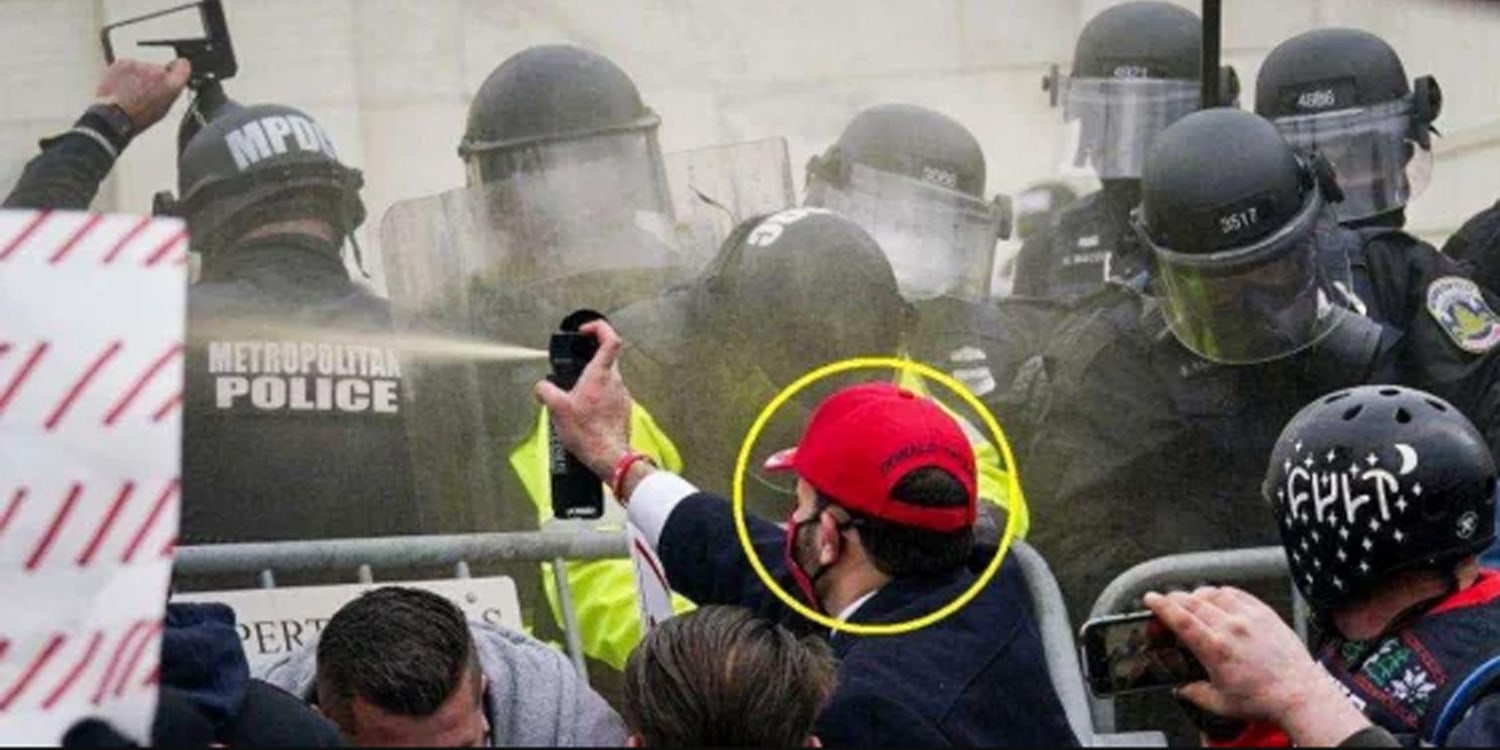A recent study published in the Journal of The Royal Society Interface sheds light on the connection between social media activity and the escalation of violence during the U.S. Capitol riot on January 6, 2021. By analyzing thousands of live video recordings, tweets from former President Donald Trump, #StopTheSteal tweets, and rally speeches, scientists identified a strong statistical relationship between Trump’s online rhetoric and the severity and duration of violent acts during the insurrection. The study illustrates how an authority figure’s online behavior can incite violent actions among followers, demonstrating the real-world consequences of digital communication during a politically charged event.
The “Stop the Steal” movement emerged in the aftermath of the 2020 United States presidential election, fueled by false claims that the election was rigged against former President Donald Trump. These unsubstantiated allegations centered on accusations of widespread voter fraud, ballot tampering, and other irregularities, despite repeated court rulings and investigations finding no evidence to support such claims.
Social media became a significant platform for spreading these narratives, with hashtags like #StopTheSteal gaining traction as Trump and his allies encouraged their supporters to reject the election results. This rhetoric culminated in a call for action to prevent the certification of the Electoral College vote on January 6, 2021.
The January 6 Capitol riot was a direct consequence of these efforts. Thousands of Trump supporters gathered in Washington, D.C., for the “Save America” rally, where they listened to speeches from Trump and other prominent figures urging them to “fight like hell” to save the country. Following the rally, the crowd marched to the Capitol, where they breached security barriers, vandalized property, and engaged in violent confrontations with law enforcement.
The riot interrupted Congress’s session to certify Joe Biden’s electoral victory and resulted in several deaths, over 140 injuries to police officers, and extensive damage to the Capitol. It marked one of the most significant attacks on the seat of American democracy in recent history.
The motivation for studying these events stems from the unprecedented nature of a sitting president’s role in inciting violence through social media and public rhetoric. The researchers aimed to explore the mechanisms by which online communication from a leader could influence real-world behaviors, particularly in the context of collective violence.
“The January 6 insurrection was a uniquely violent and historic moment in U.S. history that continues to reshape the judiciary, expand presidential power, limit voting rights, and weaken democracy,” said study author Brian Uzzi, The Richard L. Thomson Professor of Leadership at the Kellogg Graduate School of Management at Northwestern University.
“A key feature of this insurrection, and modern violent protests more generally, is the leader’s use of social media to communicate to his followers during the insurrection. We wanted to understand how a leader’s social media communications are associated with peaceful protests turning violent.”
The researchers began by examining all 16 tweets posted by Trump on January 6, as well as over 7,500 tweets tagged with #StopTheSteal. Using sentiment analysis tools, they quantified the emotional tone of these tweets, classifying them as positive, neutral, or negative. This analysis helped determine how the tone and timing of these tweets influenced the behavior of Trump’s followers both online and in person. The researchers also analyzed rally speeches, focusing on Trump’s address at the “Save America” rally and the crowd’s reactions, as measured by the length and intensity of cheers during the speeches.
To study on-the-ground actions, the researchers used over 1,100 live-action videos from the Capitol, recorded by protesters, journalists, and bystanders. These videos, which documented events in real-time across various locations, were coded for instances of violence and weapon use. Research assistants trained in identifying violent acts and weaponry categorized the severity of incidents based on a standardized scale, with actions such as shoving, beating, and firearm use assigned different severity levels. The researchers binned these incidents into five-minute intervals, aligning them with the timing of tweets and rally speeches to analyze how online and offline events correlated.
Uzzi and his colleagues found that Trump’s rally speech played a pivotal role in transitioning the crowd from peaceful protest to violent insurrection. Crowd reactions during his speech, such as the intensity and duration of cheers, were closely linked to the timing of the first outbreaks of violence. This connection suggests that Trump’s rhetoric at the rally energized the crowd, laying the groundwork for subsequent aggression. No similar effects were observed for speeches by other rally speakers.
One of the study’s most striking findings was the predictive power of Trump’s tweets. The timing, frequency, and emotional tone of his tweets strongly correlated with spikes in violence and weapon use at the Capitol. Tweets carrying negative sentiment were particularly influential, as they preceded increases in both the severity and duration of violent actions by rioters. These tweets also amplified the activity of the #StopTheSteal movement online.
“Based on unprecedented data, we found that there is a strong statistical connection between what leaders say and espouse on social media and the real-world behavior of their followers that echoes militaristic behavior,” Uzzi told PsyPost.
Following Trump’s rally speech, violence steadily increased in tandem with the frequency and tone of Trump’s tweets and #StopTheSteal activity. The peak of violence occurred around 3:30 PM, aligning with the highest levels of online activity. The researchers observed that the escalation was not random but followed a systematic pattern: bursts of violence often followed particularly emotive tweets or surges in #StopTheSteal sentiment.
“Our findings show that an authority figure’s online activity and emotional rhetoric are associated with a peaceful protest turning violent,” said co-author Brayden G. King, Max McGraw Chair of Management at Northwestern University. “This study is one of the first to show a direct link between an elected leader’s social media activity and the violent behavior of their followers.”
Another key finding was the role of feedback loops in sustaining and intensifying violence. As rioters engaged in aggressive actions, their behavior influenced the tone and content of online posts, which in turn further fueled physical aggression. This cyclical relationship demonstrates how online and on-the-ground dynamics can interact to escalate conflict rapidly. The study’s use of Granger regression models revealed that these feedback loops were statistically significant, with reciprocal effects between Trump’s communications, the #StopTheSteal movement, and violent actions at the Capitol.
“The rising levels of deadly force and weapons use was punctuated by a strong positive feedback loop between a leader’s social media rhetoric and their followers’ responses,” Uzzi explained.
Notably, the violence began to de-escalate after Trump tweeted a video message urging protesters to go home.
The study provides compelling evidence of a link between online rhetoric and real-world violence. But like all research, it has limitations.
“While our analysis uncovered a firm statistical link between a leader’s social media use and their followers’ violence, and was based on extraordinary data on 1,000s of minutes of on-the-ground video, rally speeches, all the leader’s tweets and their followers’ tweets, it is impossible to determine whether the leader-follower connection we observed is causal in nature,” Uzzi noted. “Nevertheless, strong correlations often underlie causal relationships and are our best empirical guideposts when experiments involving violence are impossible to recreate.”
One critical direction for future research is exploring whether the study’s findings generalize to other protests and contexts. The Capitol riot occurred in a politically polarized environment within the United States. Investigating similar events in different cultural, legal, and political contexts would help determine how variations in societal norms and structures shape the dynamics of protest violence.
Additionally, researchers could examine how the personalized relationship between a leader and their followers affects the escalation of violence. The study suggests that Trump’s unique influence over his supporters played a pivotal role in intensifying aggression. Future work could investigate whether this dynamic holds true for leaders with different levels of personal charisma or relational authority and how these factors interact with social media to drive behavior.
Looking forward, Uzzi hopes to “learn more about how leaders’ use of social media incites real world behavior, particularly violence, the weakening of democratic institutions, and the loss of civility in society.”
The study, “Quantifying social media predictors of violence during the 6 January US Capitol insurrection using Granger causality,” was authored by Qinghua Li, Brayden G. King, and Brian Uzzi.




